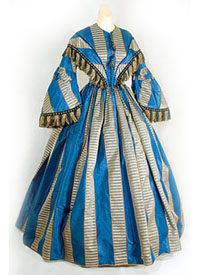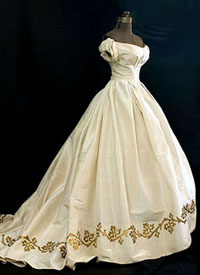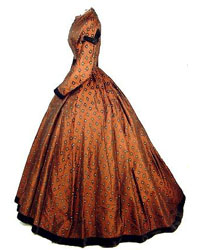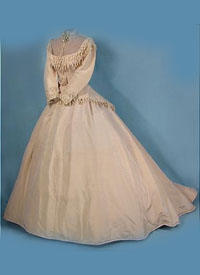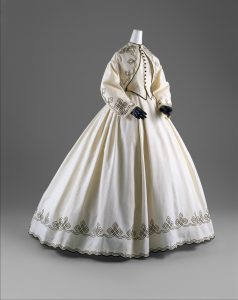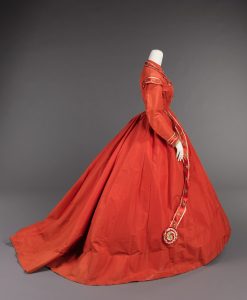The era of the skirt dawned, yet it was to be 30 years before skirts were worn unhindered by support structures. The round hoop of 1860 evolved, by 1864, into an oval hoop. As the skirt developed, its back was emphasized by the the bustle, which appeared by 1868. The big, high, and draped bustle skirt enjoyed popularity for eight years.
In the 1860s, the bodice waist became slightly shorter, but dropped shoulders remained. Sleeves narrowed, and although fitted at the wrist, featured some width at the elbow. Square yoke lines were seen often for day. The look was created with braid or fringe, or these were sometimes made as a separate piece (similar to today’s dickey collar) that could be removed for evening wear. This left a lower, bare neckline.
To emphasize the wide neckline on evening dresses, Bertha collars—which followed the décolleté—were made of pleated fabric, ruffles, or lace. Fringe, braid, and lace were widely used. Fabric stayed lightweight; lawn, taffeta, and silk or wool blends were popular. Dresses tended to be made of one fabric, with lace or trim added for interest.
Written by The Vintage Fashion Guild
